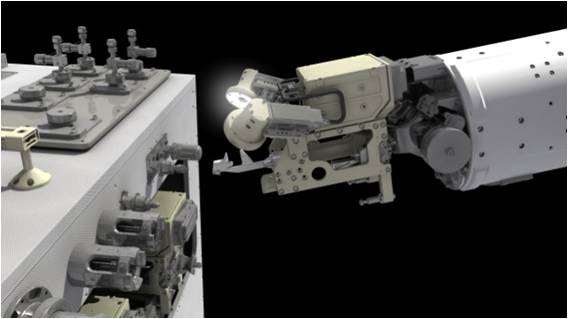
Yesterday saw the final space walk of the shuttle program, and one of the top tasks on the agenda was installing the Robotic Refueling Mission.
Robotic Refueling Mission (RRM) demonstrates and tests the tools, technologies and techniques needed to robotically refuel satellites in space, even satellites not designed to be serviced.

The cool thing about all this (as if robots in space weren’t enough) is that the RRM was designed to show how it can be used to service satellites that were never intended or expected to be touched again once they were set in orbit. This opens up new possibilities for extending the life of satellites by accessing them remotely from earth using robotics. Because the satellites were never expected to be serviced, though, there is a good deal of “play” and experimentation that has been done to come up with ways to access the satellites and work on them. Grunsfeld likened it to makers tinkering at their workbenches. There’s even a “busy board” component to the RRM that will allow experimentation to show how robotics can be used to handle a variety of tasks that could be needed in satellite servicing. All of these operations will be remote-controlled by humans on earth. You can read more about the RRM on NASA’s web site.
You can see a video recap of Day 5 of the mission, with the final space walk, here
ADVERTISEMENT







